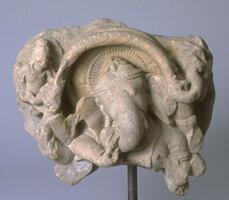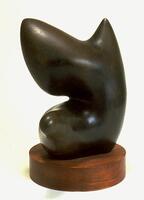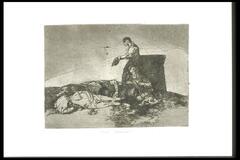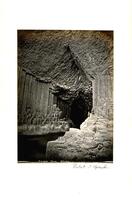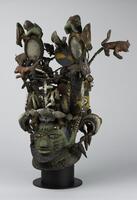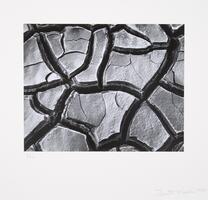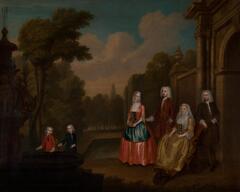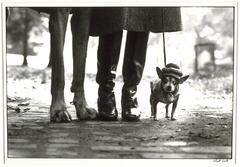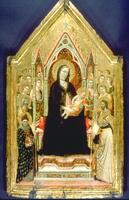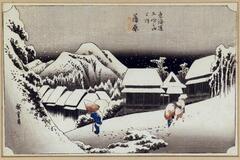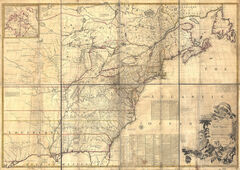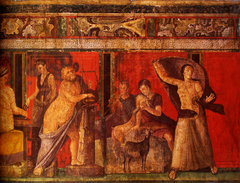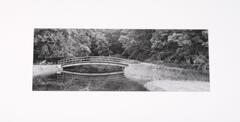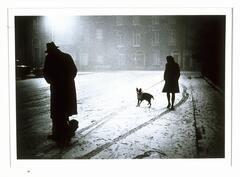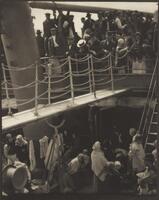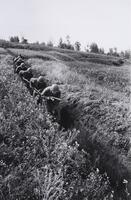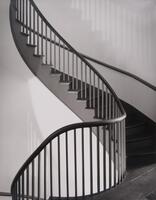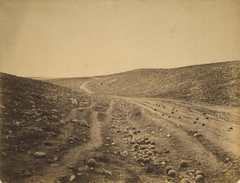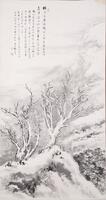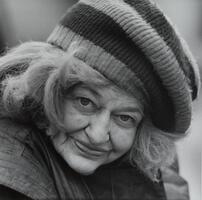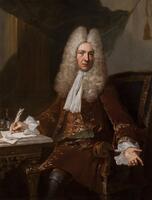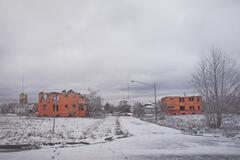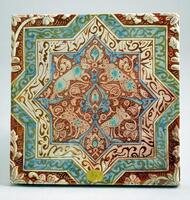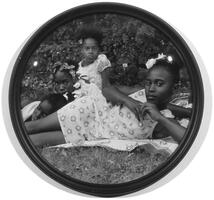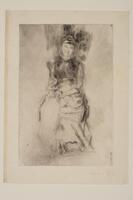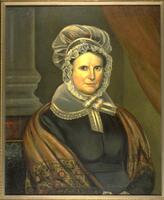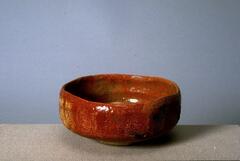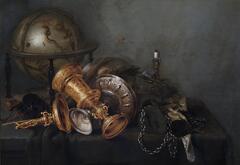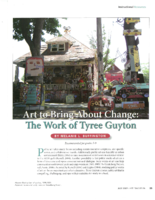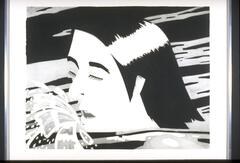Lesson Plan: Egungun Mask
UMMA Teacher Workshop, 2009 Lesson created by Claudia Burns and Pam Reister
Objectives
Students will learn about Yoruba masquerade traditions, the Egungun tradition in particular. Through discussion and creating their own mask, they will explore aspects of their own identities.
National Core Standards
- Students describe the function and explore the meaning of specific art objects within varied cultures, times, and places
Grades
6-12
Time Required
Up to three class periods
Materials
- Clay and clay tools/plastic for wrapping sculpture
- Plastic multi-cultural facial form molds (available Dick Blick’s)
- Vaseline and hair dryer to use for releasing clay from mold
- Sculpture wire and other wire for attaching objects
- Beads, trinkets and other ephemera for embellishment
- Black acrylic and/or spray paint and Rub ‘n’ Buff for surface treatment
Lesson Plan
- Introduce UMMA’s Yoruba Egungun headdress. Discuss what it looks like, what it is made out of, how it would feel to wear. Introduce the objects on the scaffolding and what they symbolize for the Yoruba people. If possible, watch a video performance of Egungun dancing.
Description of the Egungun headdress: Egúngún—meaning “power concealed”—is a masquerade performed to honor the sprits of important Yoruba ancestors. This marvelous headdress is worn with a voluminous costume made from layers of brightly colored cloth strips that billow and flare with the whirling rotations of the dancer: the spinning dance and the flaring attire communicated that the dancer had left the human realm and was manifesting the realm of the spirit. Distinguished by its large ears, it is called erin, or elephant, a metaphor for both the grandeur of its costume and the wealth of its owner.
This headdress is a veritable theater of symbols that allude to its history and might. Birds evoke “our mothers”—female elders and ancestors who possess both creative and destructive powers—while lions leap in likely reference to British heraldry. Medicine packs shaped like beaded lozenges and triangles, a Christian cross, and Qur’anic amulets testify to the intersection of religions in Yoruba culture. The beard, protective bird claws, and a double-headed drum used to praise and fortify hunters suggest this was a hunter’s Egúngún.
A massive, baroque, and busy wood-carved headdress with stylized face (showing classic Yoruba features) of bulging eyes with defined upper lids, long, straight, triangular nose, symmetrical scarification patterns consisting of three horizontal lines on each cheek, a short beard from ear to ear just underneath the lower lip. Two large “ears” protrude on either side of the head and act as “scaffolding” for numerous attachments. The ears terminate in two oblong mirrors with lions leaping off of each. Layers of pigment are visible, giving impression it has been repainted over time.
- Students they will identify and create symbols important to their own lives. Read the “I Am From…” poem below, adapted from George Ella Lyon’s format (http://www.georgeellalyon.com/where.html) . Share your own background with your students. Engage them in conversation. Get them to think about their personality, history, interests, family, foods, and sayings.
I AM FROM
I am from bobby pins, doo-rags
and wide toothed combs.
I am from tall grass, basketballs and
slimy slugs in front of my home.
I am from prayer plants that lift
their stems and rejoice every night.
I am from chocolate cakes and deviled
eggs that made afternoon snacks just right.
I am from older cousins and hand me downs
to “shut ups” and “sit downs.”
… I am from family roots and blood,
Oh, I forgot to mention love.
Segments from Oretha Storey’s poem
Students can write their own “I am From” poem given this format.
- Make a mask
The clay mask process described below is just one method students can use. Plaster, gauze or a torn paper /acrylic medium combination can be substituted or any medium of your choice.
a. Create a clay mask using a plastic mask form layered on the inside with a 3/8’ inch thick clay slab. Use Vaseline on the form to help in releasing the mask. If necessary, reinforce the features and chin areas. Wrap and let set overnight. Use a hairdryer both inside and out to release the clay from the mold. After releasing the mask have students add to it as desired to look more like themselves, and trim and smooth out the edges.
b. Create a base from an additional slab and carefully attach (scratch and slip) it to the facemask. We found that a cylinder with a collar-like shape worked well. Create and attach a clay hook on the back.
c. Use clay to create the five or more symbol objects. Alternatively, or in addition to the clay-constructed objects, inexpensive items may also be used (this may call for a trip to the dollar store). Objects must be big enough and sufficient enough in number to fill up the area on the sides and back of the head. A hole or hook will help later in attaching the objects to the sculpture.
d. Dry and fire. Use black acrylic or spray paint and metallic Rub ‘n’ Buff to approximate the finish on the Egungun mask. Use sculpture wire to create a framework to be set inside the mask structure. Use the hook to secure the wire structure to the base. Attach objects to the wire structure and add beads, trinkets and other ephemera for embellishment.
- Present masks and poems together, sharing them with the class.
Part of 1 Learning Collection
Lesson Plan: Translating a Familiar Landscape
“Tradition Transformed: Chang Ku-nien Master Painte...
“Tradition Transformed: Chang Ku-nien Master Painte...
Lesson Plan: Collaborative Scroll of Images and Poetry
“Creative Literacies: Expanding our View,” UMMA Wor...
“Creative Literacies: Expanding our View,” UMMA Wor...
Lesson Plan: Compare and Contrast Drawing and Sculpture
UMMA Exhibition, “The Graphic Dimension: Prints and...
UMMA Exhibition, “The Graphic Dimension: Prints and...
Lesson Plan: Content and Style – Corresponding or Contradicting?
“Creative Literacies: Expanding our View,” UMMA Wor...
“Creative Literacies: Expanding our View,” UMMA Wor...
Lesson Plan: Setting the Scene – Descriptive Writing with Photography
“Teaching with Photography,” UMMA Workshop for Educ...
“Teaching with Photography,” UMMA Workshop for Educ...
Lesson Plan: Not a Failure . . . Just a Draft
“Creative Literacies: Expanding our View,” UMMA Wor...
“Creative Literacies: Expanding our View,” UMMA Wor...
Lesson Plan: Calligraphy and Radial Design in Islamic Art
Lesson adapted from Educator Resources, Victoria & ...
Lesson adapted from Educator Resources, Victoria & ...
Lesson Plan: Memory Maps, Using the Mitchell Map (1755)
“Benjamin West: General Wolfe and the Art of Empire...
“Benjamin West: General Wolfe and the Art of Empire...
Lesson Plan: Multipoint Perspective: Using Art to Teach Writing
“Creative Literacies: Expanding our View,” UMMA Wor...
“Creative Literacies: Expanding our View,” UMMA Wor...
Lesson Plan: The New Sublime and Photographic Landscape
“Teaching with Photography” UMMA Teacher Workshop,...
“Teaching with Photography” UMMA Teacher Workshop,...
Lesson Plan: Panorama Handscroll Using Multiple Literacies
Lesson inspired by Elaine Wilson’s “Charting the Wo...
Lesson inspired by Elaine Wilson’s “Charting the Wo...
Lesson Plan: Playing with Scale in Landscape or Still Life
“Tradition Transformed: Chang Ku-nien Master Painte...
“Tradition Transformed: Chang Ku-nien Master Painte...
Lesson Plan: Exploring the Emotional Impact of Portraiture Through Free Writing
UMMA Teacher Workshop, “Xu Weixin: Monumental Portr...
UMMA Teacher Workshop, “Xu Weixin: Monumental Portr...
Lesson Plan: Positive and Negative Space in Photography
“Teaching with Photography,” UMMA Workshop for Educ...
“Teaching with Photography,” UMMA Workshop for Educ...
Lesson Plan: Setting Up a Collaborative Short Story
“Teaching with Landscape Photography,” UMMA Teacher...
“Teaching with Landscape Photography,” UMMA Teacher...
Lesson Plans: Ideas for Writing with Portraits
UMMA Teacher Workshop, “Xu Weixin: Monumental Portr...
UMMA Teacher Workshop, “Xu Weixin: Monumental Portr...
Lesson Plan: Zoom In: The Significance of Detail
“Creative Literacies: Expanding our View,” UMMA Wor...
“Creative Literacies: Expanding our View,” UMMA Wor...
Rate this Resource
AVG: 0 | Ratings: 0
& Author Notes
Creative Commons by-nc-saLast Updated
May 31, 2017 9:22 a.m.Report
Reporting Policy

